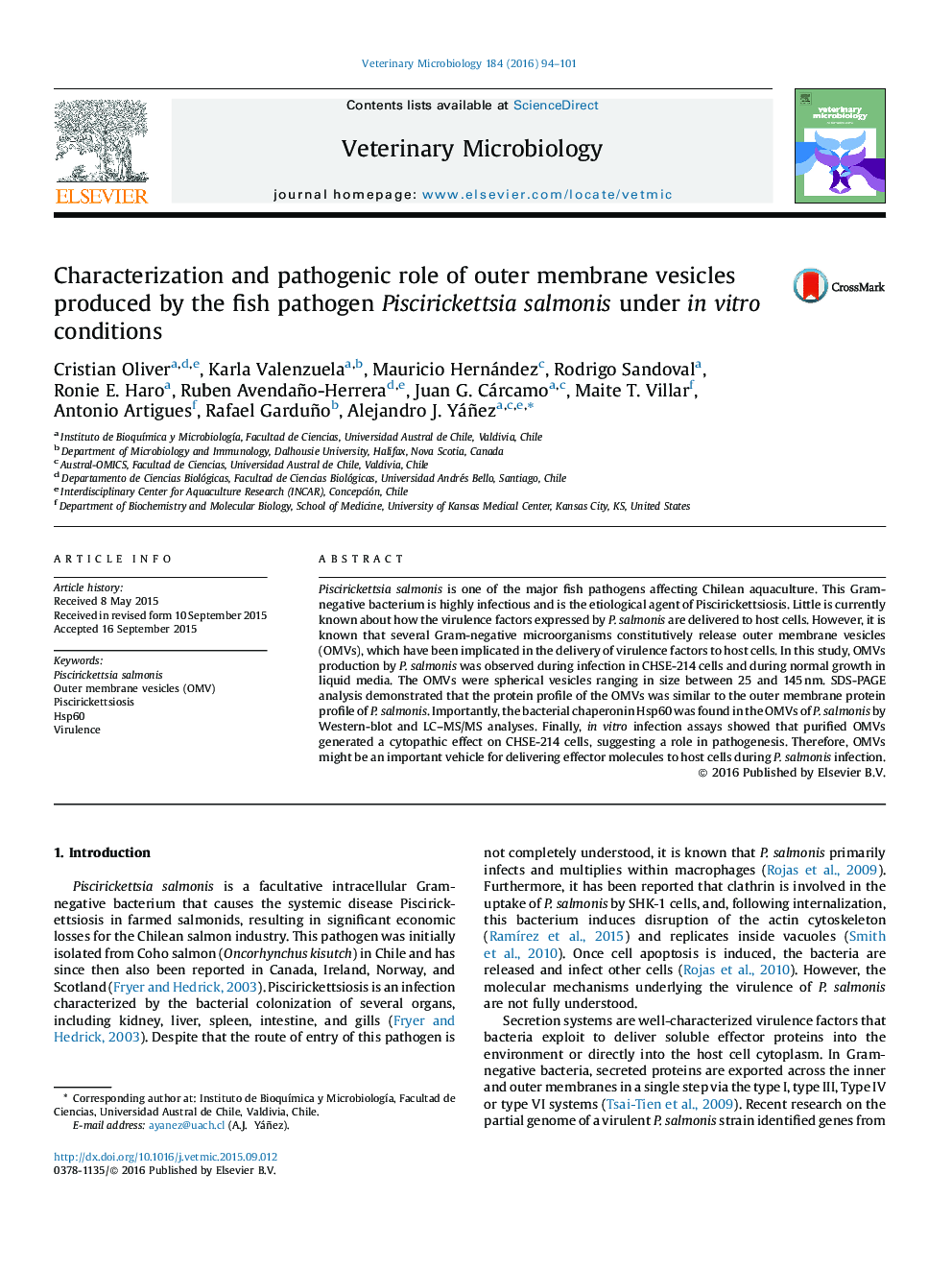| Article ID | Journal | Published Year | Pages | File Type |
|---|---|---|---|---|
| 2466472 | Veterinary Microbiology | 2016 | 8 Pages |
•The salmon pathogen P. salmonis is able to produce outer membrane vesicles (OMVs).•The role of OMVs in pathogenicity in in vitro conditions was studied.•Purified OMVs induced cytotoxicity into the salmonid CHSE-214 cells.•The virulence factor Hsp60 was found in the proteome of OMVs of P. salmonis.
Piscirickettsia salmonis is one of the major fish pathogens affecting Chilean aquaculture. This Gram-negative bacterium is highly infectious and is the etiological agent of Piscirickettsiosis. Little is currently known about how the virulence factors expressed by P. salmonis are delivered to host cells. However, it is known that several Gram-negative microorganisms constitutively release outer membrane vesicles (OMVs), which have been implicated in the delivery of virulence factors to host cells. In this study, OMVs production by P. salmonis was observed during infection in CHSE-214 cells and during normal growth in liquid media. The OMVs were spherical vesicles ranging in size between 25 and 145 nm. SDS-PAGE analysis demonstrated that the protein profile of the OMVs was similar to the outer membrane protein profile of P. salmonis. Importantly, the bacterial chaperonin Hsp60 was found in the OMVs of P. salmonis by Western-blot and LC–MS/MS analyses. Finally, in vitro infection assays showed that purified OMVs generated a cytopathic effect on CHSE-214 cells, suggesting a role in pathogenesis. Therefore, OMVs might be an important vehicle for delivering effector molecules to host cells during P. salmonis infection.
